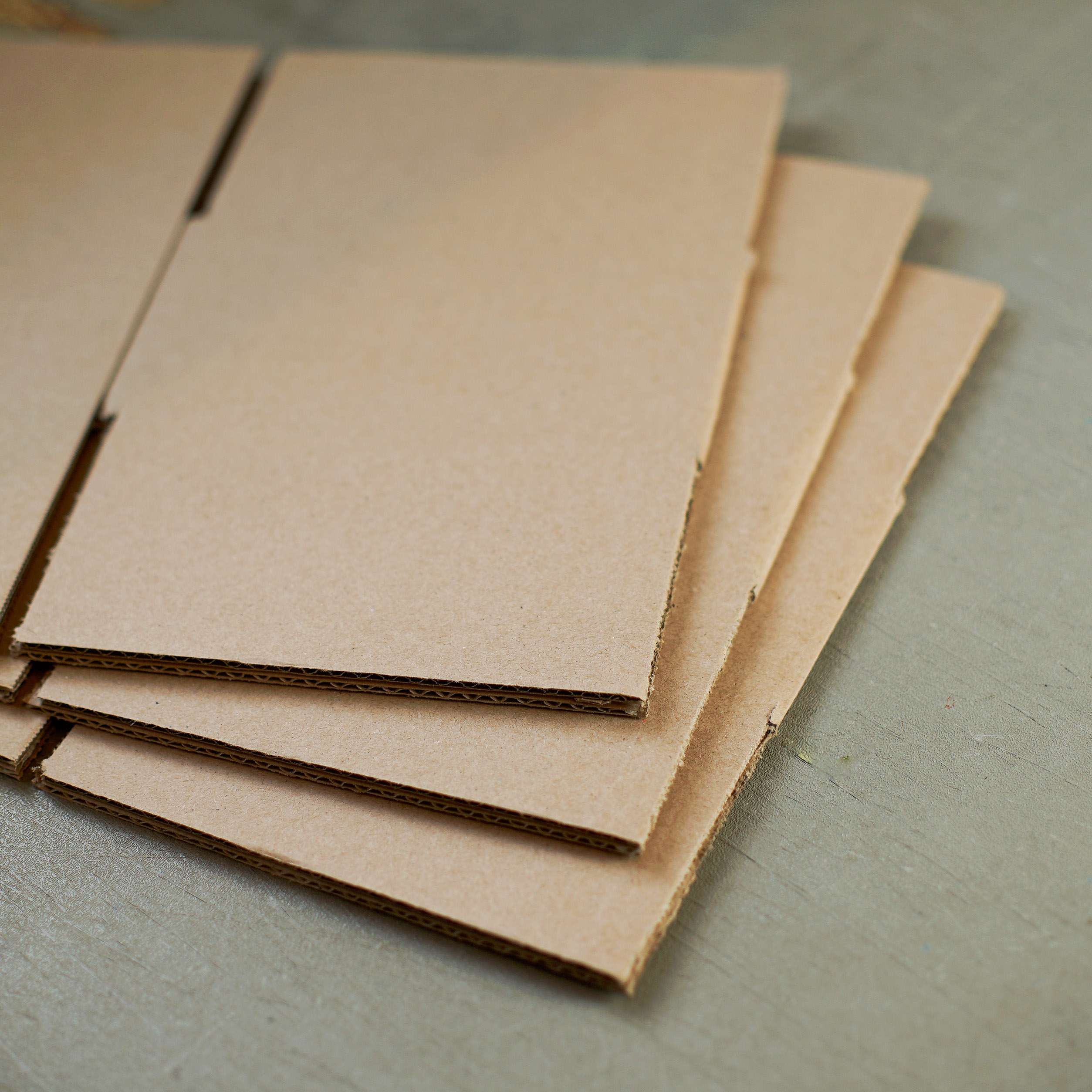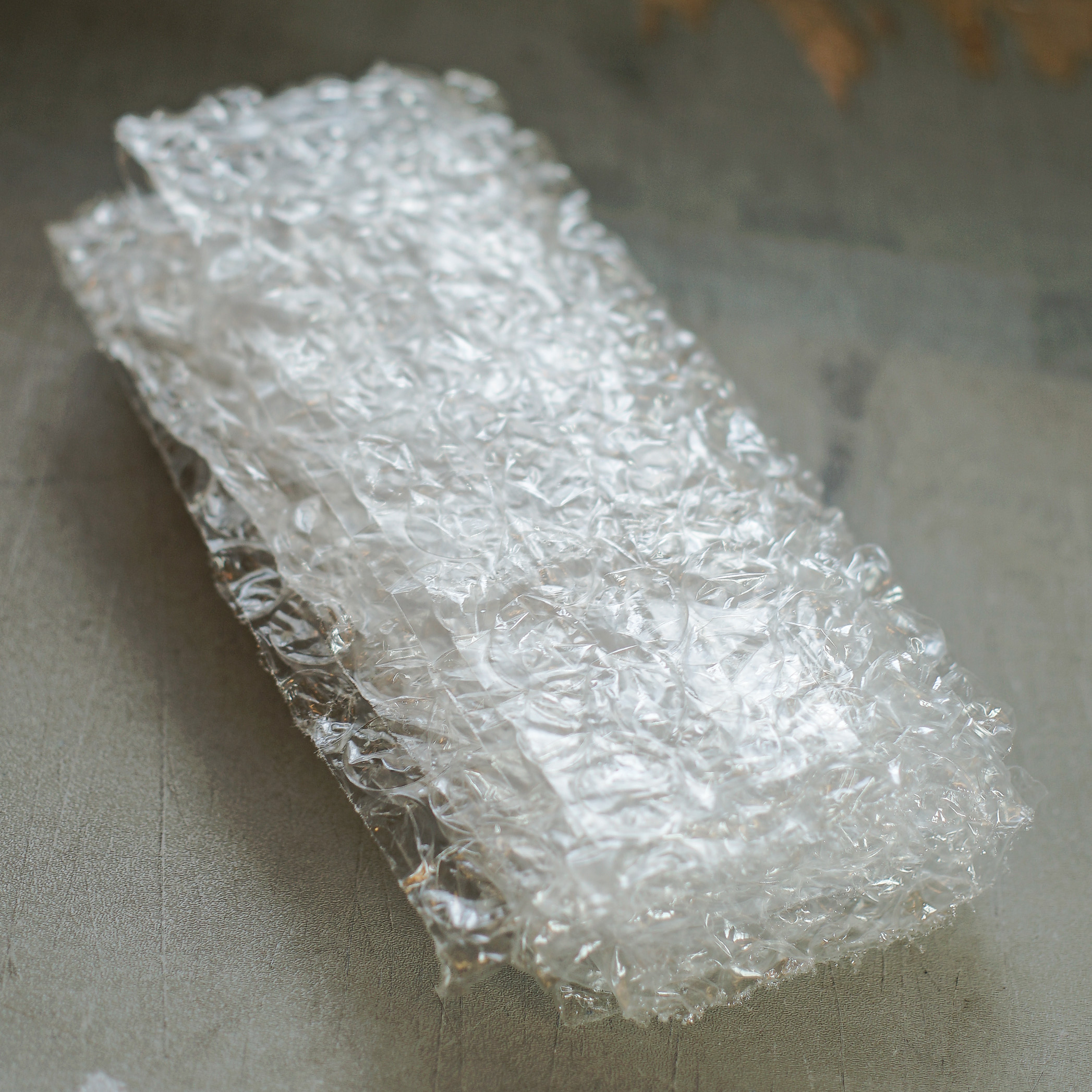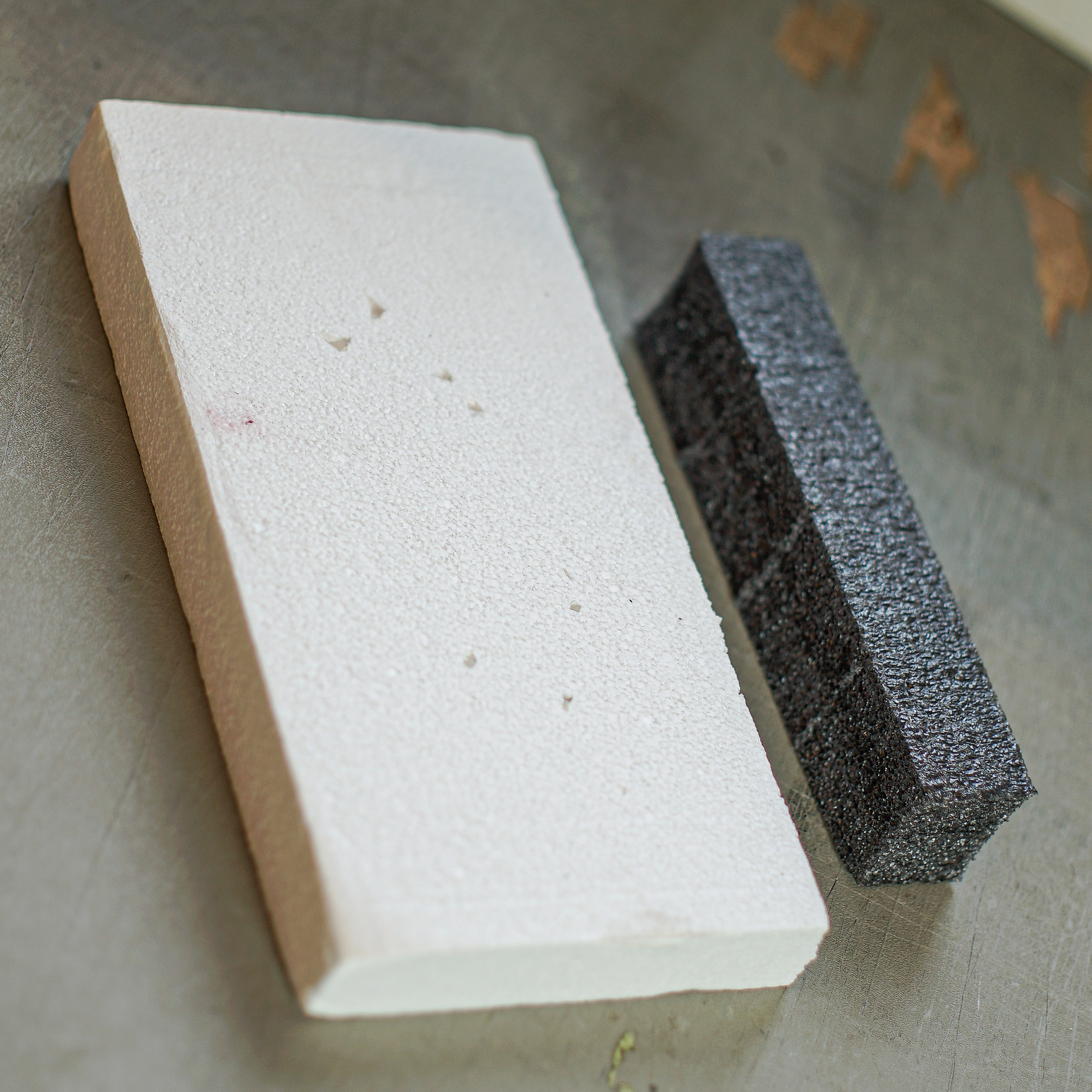What you’ll need
- Packing tape – Moving or packing tape is preferred, Things like duct tape, electrical tape, other tape may not hold on to the box well enough during shipping.
- Scrap cardboard or foam – This will be used to insulate the gear from the inside of the box. Lots of things can happen between A to B, so you’ll want plenty of padding to keep your gear safe
- Bubble wrap – This is essential for shipping things safely, you’ll want to get plenty. Most stores have this in the moving section.
- Packing paper – Sturdy paper that has no ink or glue for wrapping items. Temperature or humidity changes can cause things to melt or run onto your gear, so this is why we recommend NOT to use newsprint as insulating material.
Click here for a video tutorial!
First steps
The most important thing to understand about packing your guitar safely for shipping is that your goal is to completely immobilize the guitar inside the case and the case inside the box.
Let’s start with the simplest guitar to pack, an electric guitar with a bolt-on neck like a Fender Telecaster. You can leave this type of instrument at standard pitch and proceed with packing. (We’ll talk about detuning certain types of guitars later on) Fill any empty spots in the case where the body of the guitar might be able to move around. We recommend using plain brown packing paper (newsprint and paper towel works too!).
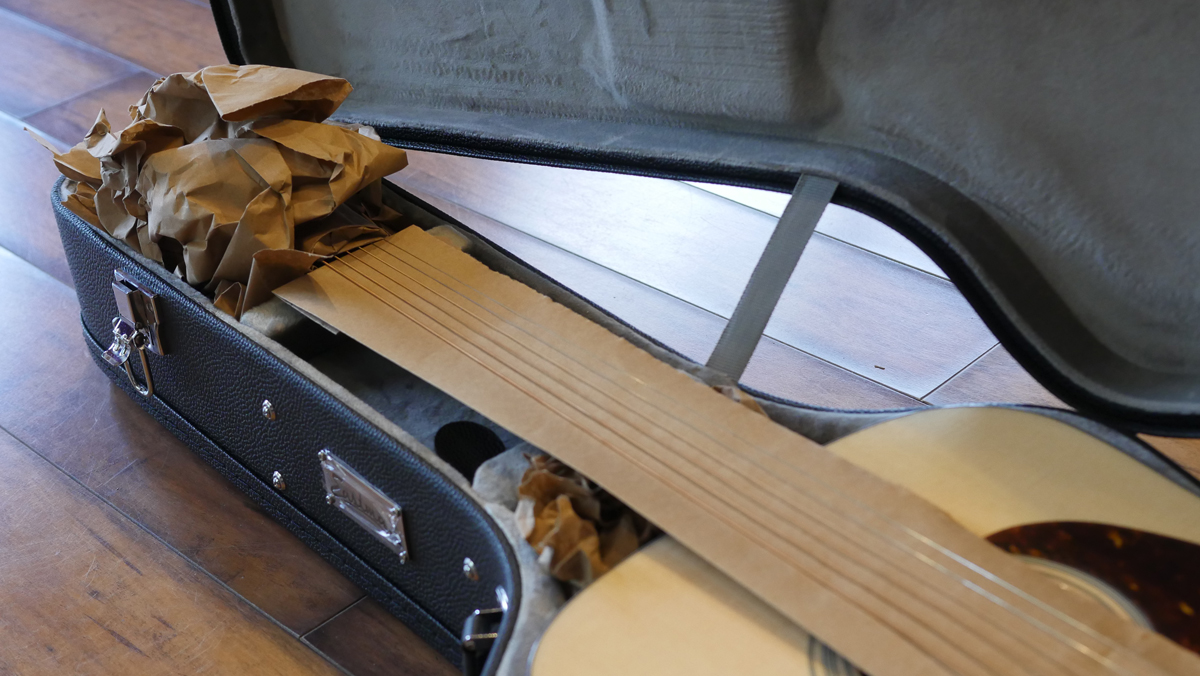
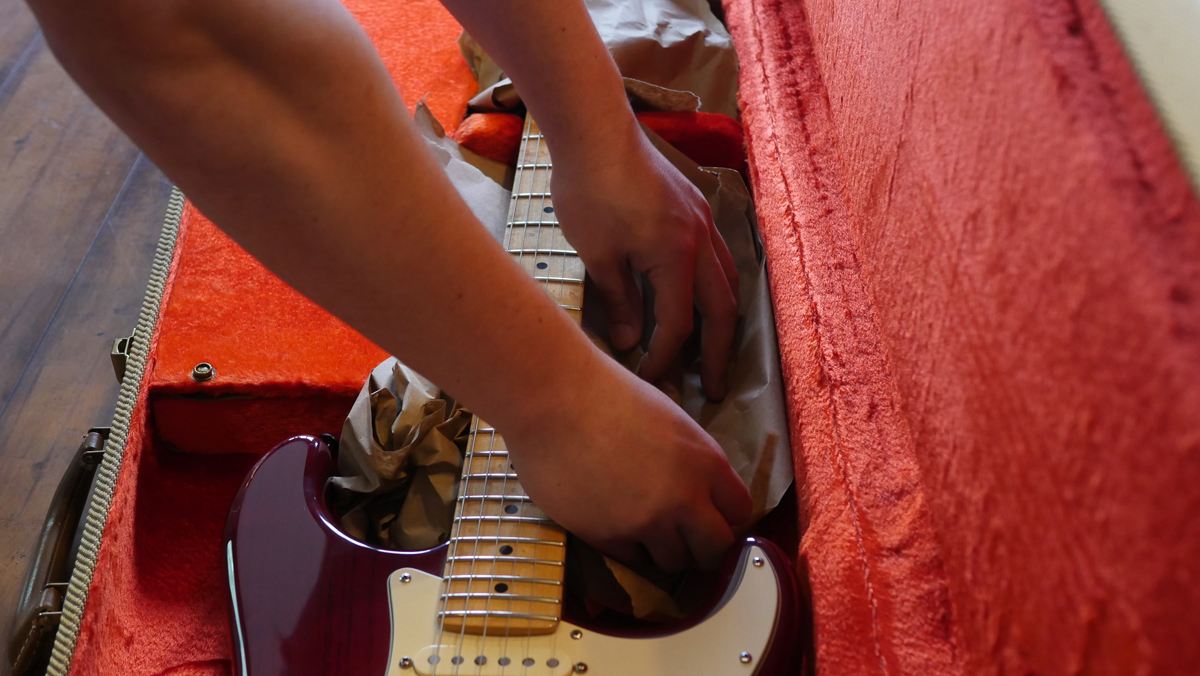
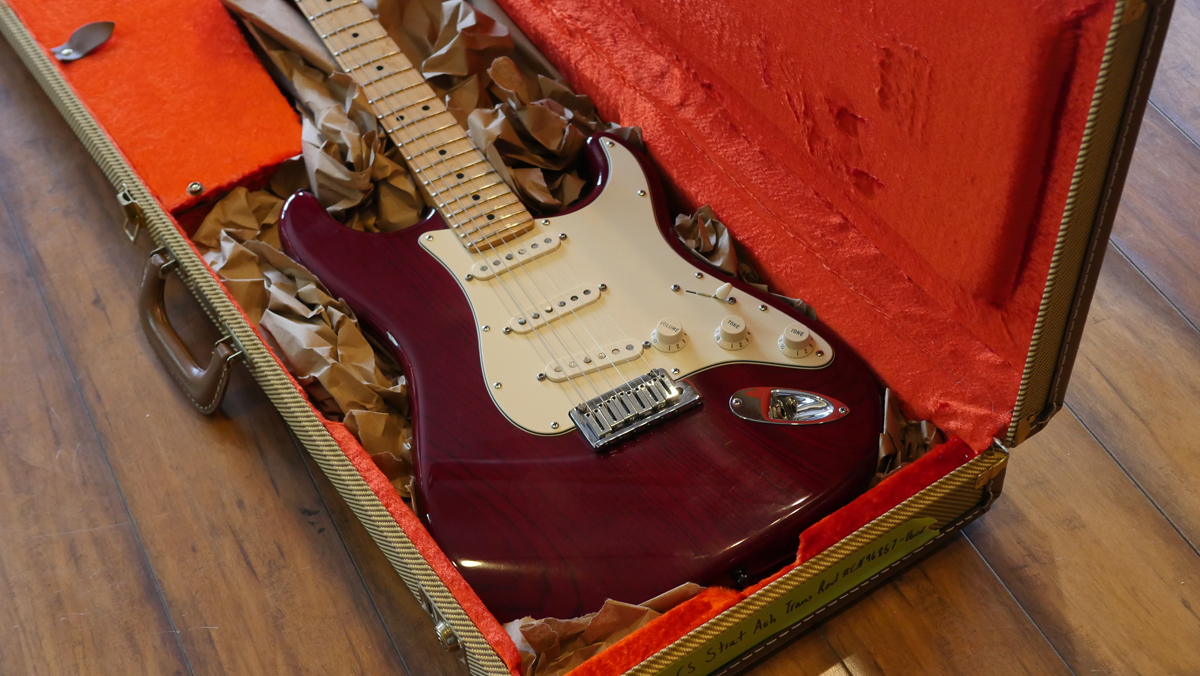
We recommend protecting your frets and fingerboard by slipping some paper or paper towel under the strings. A hard bump during shipping has the potential to dent or scratch your frets or fingerboard. Some manufacturers (like Suhr, Anderson, and Tuttle) include a plastic fingerboard protector with your guitar to be used both in shipping and regular transit, if you’ve got one of these, use it!
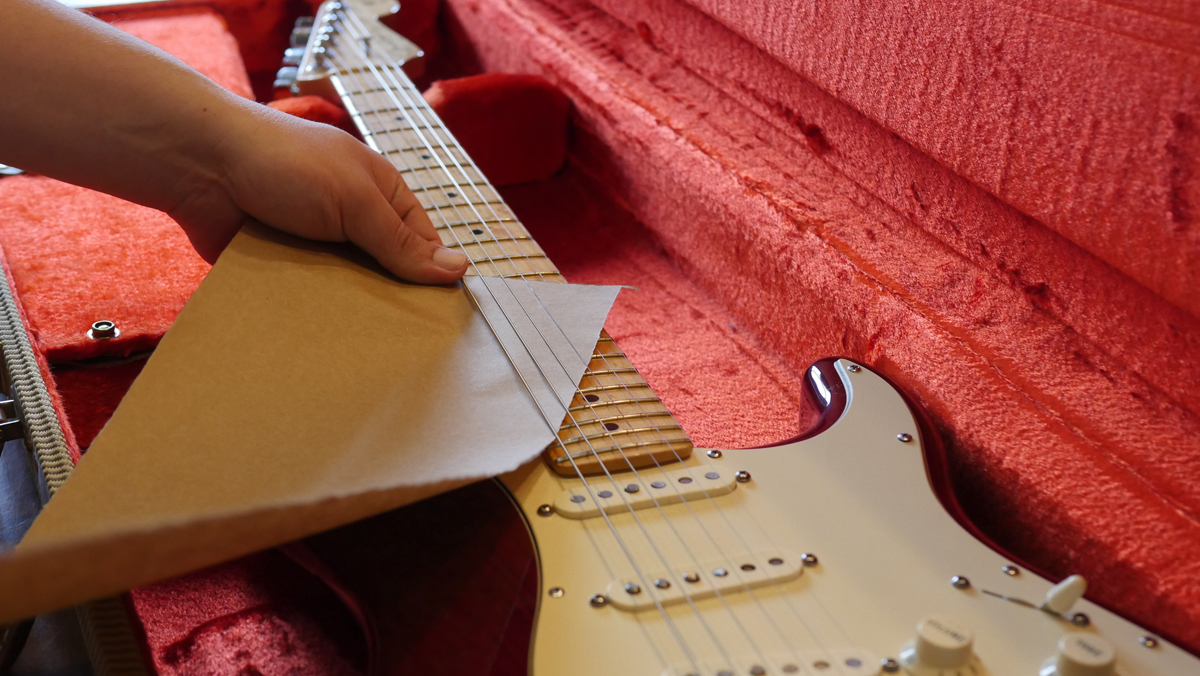
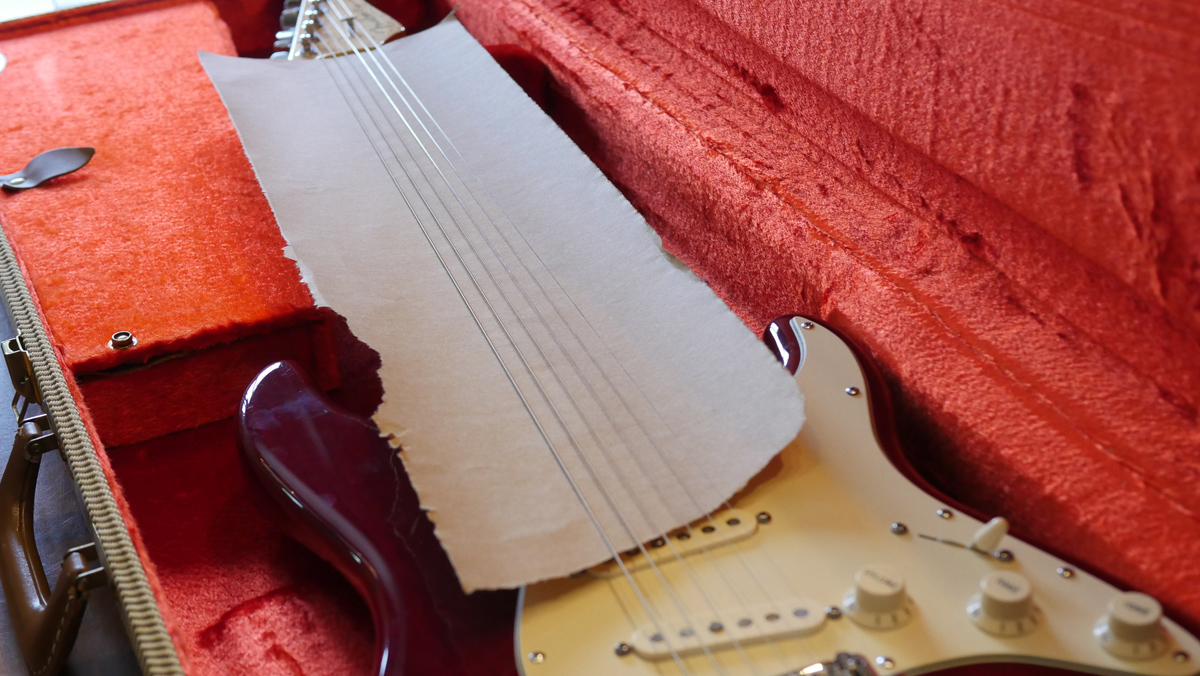
Next, surround the headstock with padding to lock it into place. You’ll know you’ve got enough cushion when it takes just a little extra effort to close the case. The headstock is the most susceptible to whiplash damage, so take some extra care to keep it from moving around during shipping.
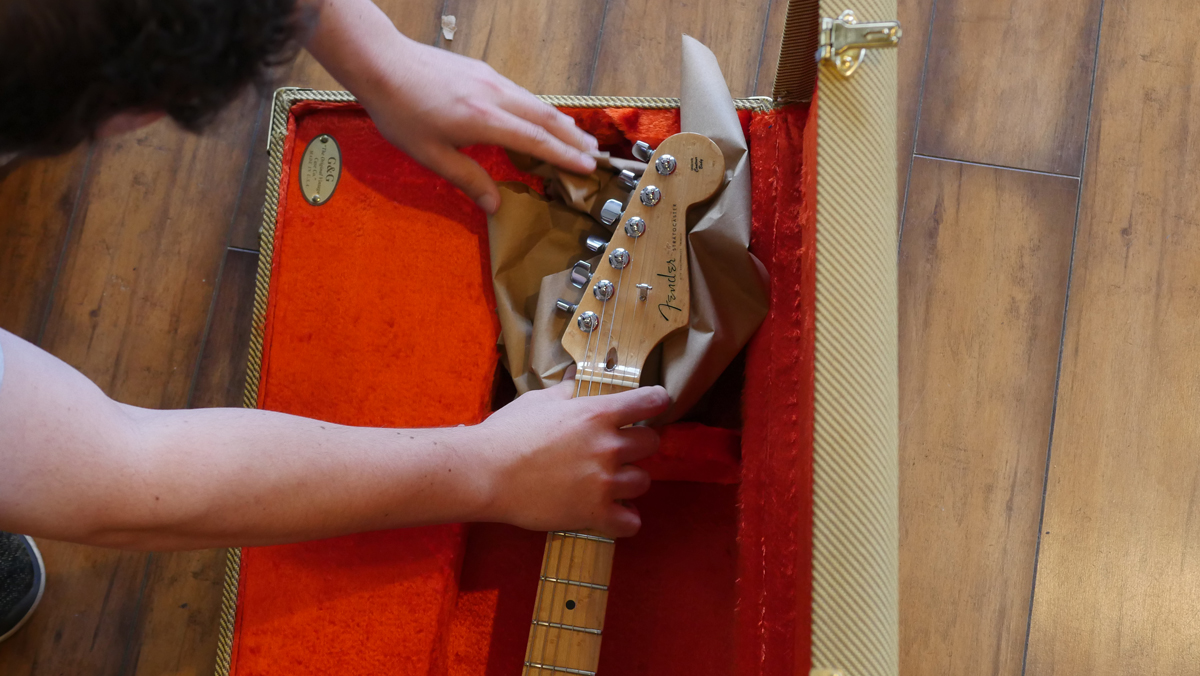
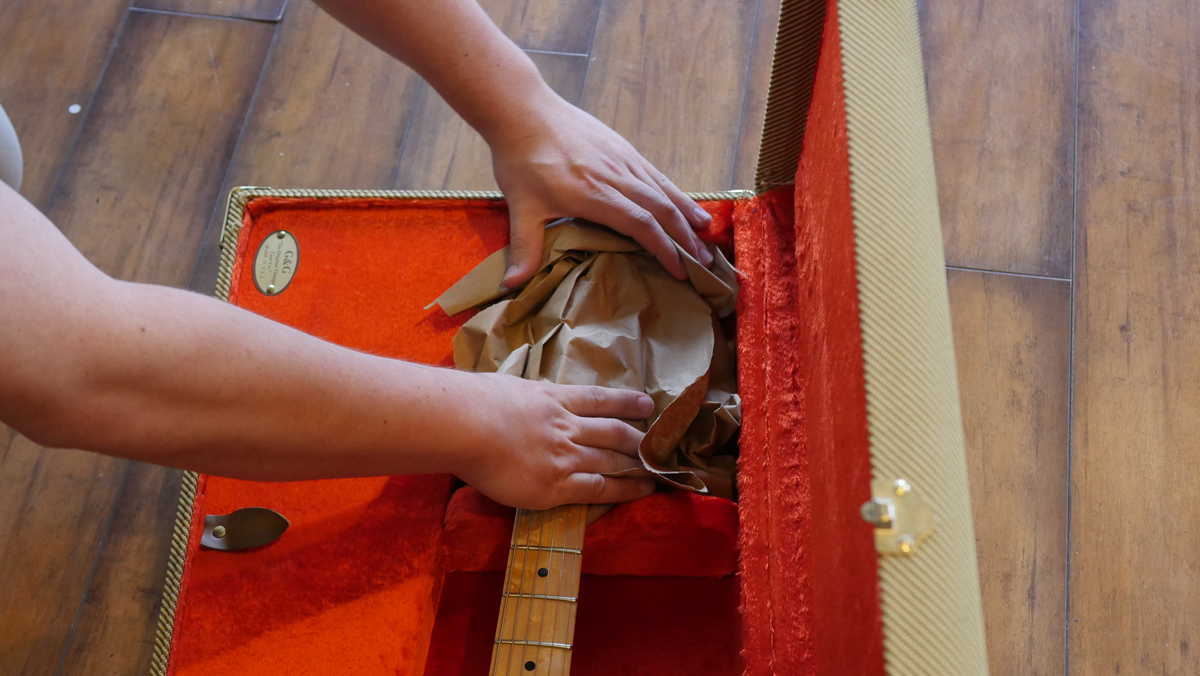
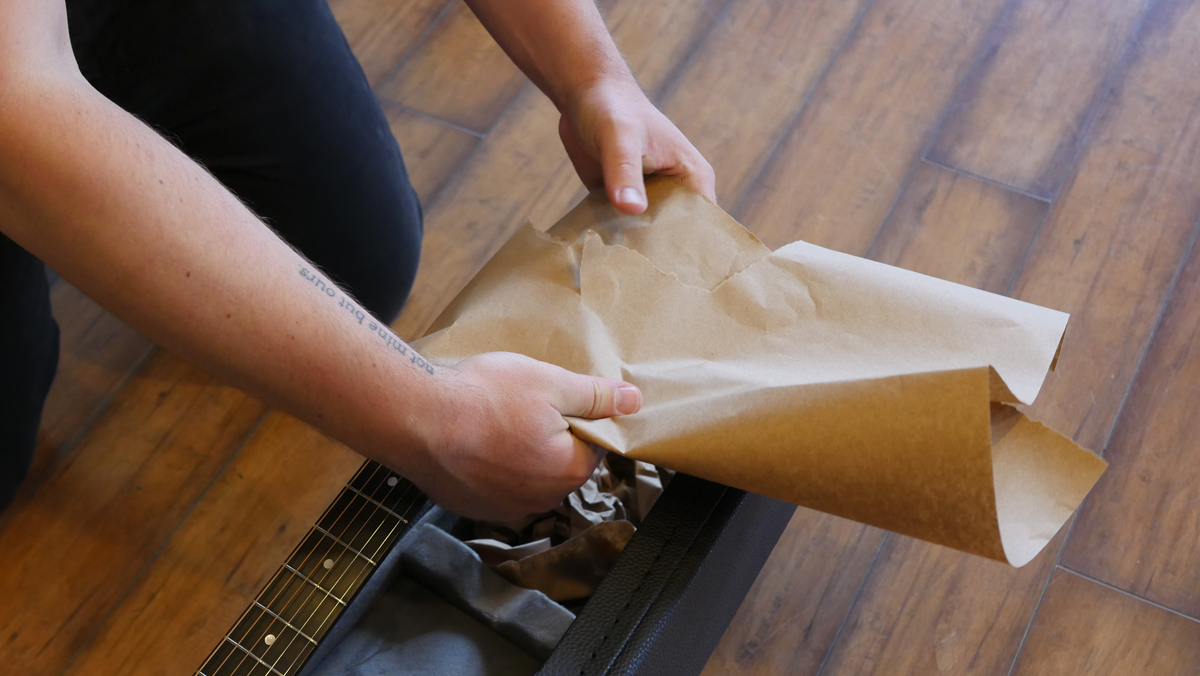
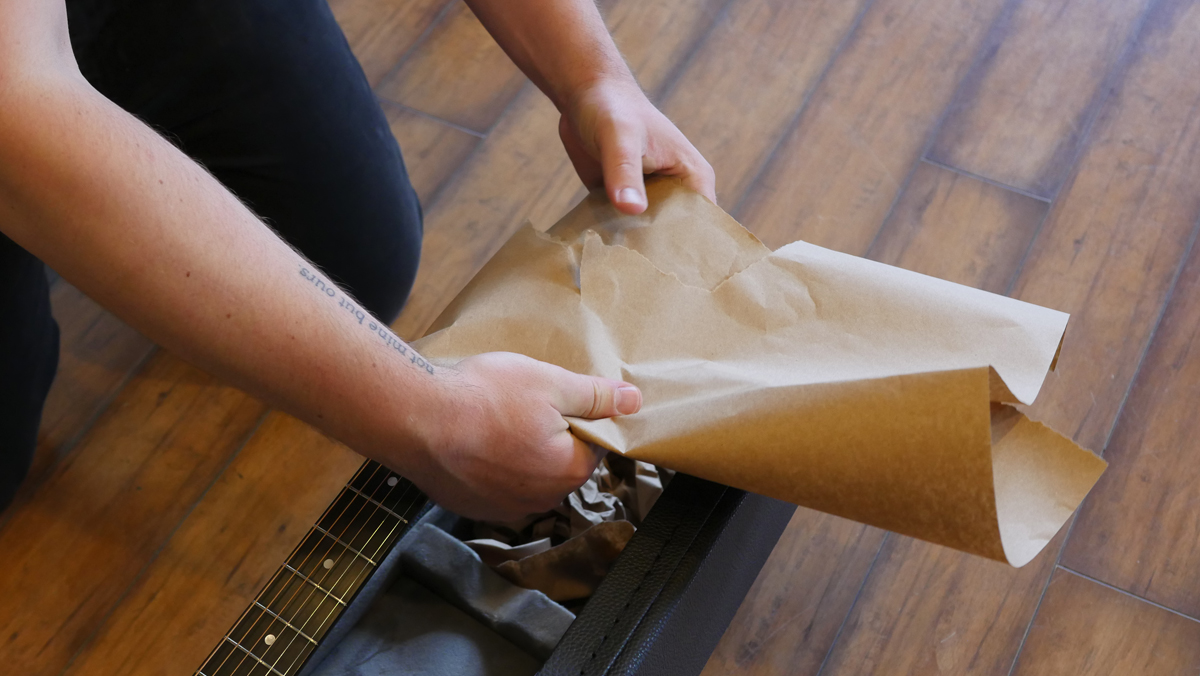
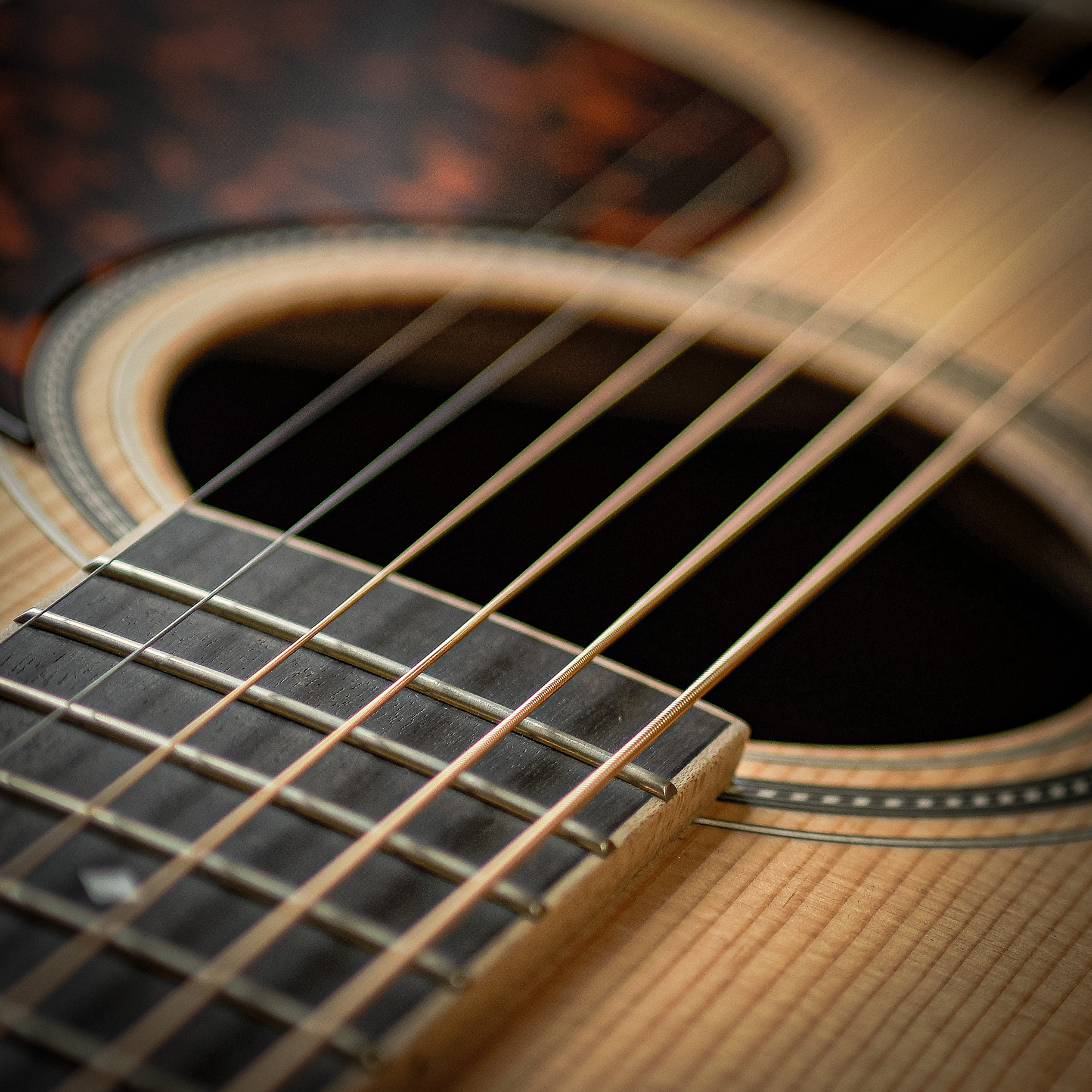
During colder months, watch out!
If you’re shipping this guitar during colder weather, advise the recipient to wait at least 24 hours before opening the box and the case. Guitars need time to acclimate to the warmer indoor conditions and a drastic temperature change could damage the finish or the guitar itself.
Let’s move onto a set-neck electric, like a Gibson Les Paul or SG. Unlike bolt-ons, set-neck construction puts more strain on the neck joint during the shipping process. To help with this, we detune the guitar one whole step down, relieving some stress on that joint. We don’t recommend tuning down any further than one whole step; the truss rod relies on the string tension to keep your neck straight. Tuning down further could cause your guitar’s neck to back-bow which will have to be corrected at its destination. Pack the case just like we did in the first example.
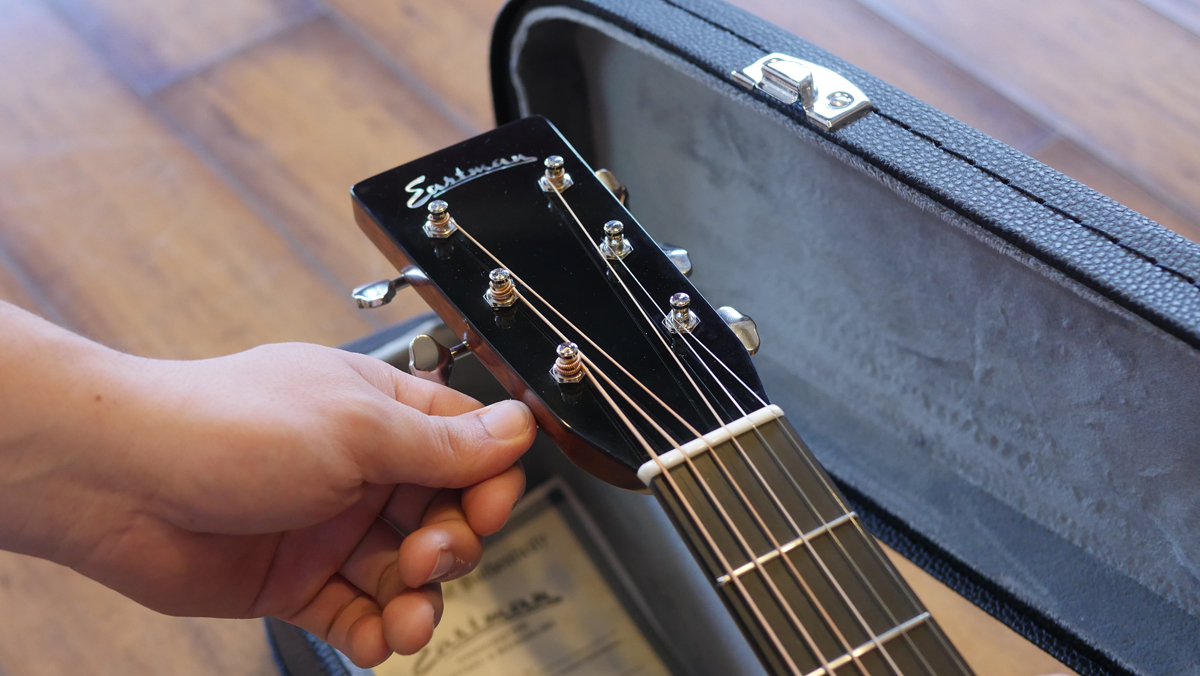
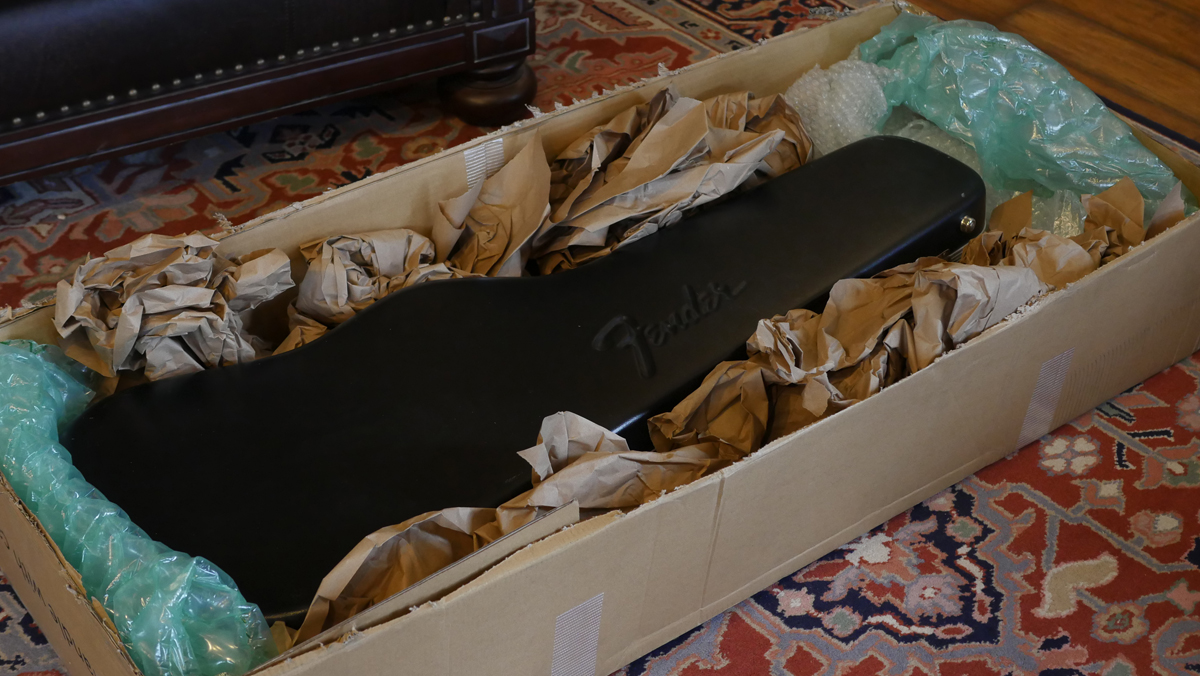
Now let’s move on to packing the case in the box. We recommend building a two inch barrier between all sides of the case and the box. Add packing to the bottom of the box and place your case on top. Then, fill the box on all sides of the case with your packing material. Again, we recommend plain brown shipping paper, but bubble cushion, bubble wrap, and other standard packing materials are worthy substitutes. If your case is touching the box, consider employing more packing materials or a bigger box. For non-rectangular cases, it’s especially important to build a lot of padding around the neck and headstock end of the case to keep it from moving during shipping.
While nothing beats shipping your guitar in a robust hard case, you may find yourself shipping your guitar in a gig bag. Whether your gig bag is the deluxe variety (with tons of support and extra padding) or the more humble soft case, always take extra care when packing the box. For especially thin and flimsy bags, we recommend wrapping the entire exterior in bubble wrap and extra layers around the neck and headstock to protect these delicate spots from impact damage.
Flat tops
Flat top acoustic guitars should also be detuned one whole step. Pay close attention to the area around the neck heel, end pin, and any cutaways. If your guitar has a removable endpin set it aside and stow it safely in the pocket of the case. If there’s some space behind and around the neck heel we’ll fill that in to ensure the guitar doesn’t have room to move during shipping.
Archtops
Archtop and semi-hollow guitars require the most care in packing. Detune your archtop one whole step. If your guitar is equipped with a floating tailpiece, wrap it in paper (or paper towel). If your package were to take a drop or bump flat on its back, the tailpiece could potentially bounce off the body of the guitar and damage the finish. Similarly, if you’ve got a floating pickguard, put some padding between the pickguard and the body or remove the pickguard altogether and stow it separately in the case. Once these extra considerations are out of the way, pack the case just like our previous examples.



